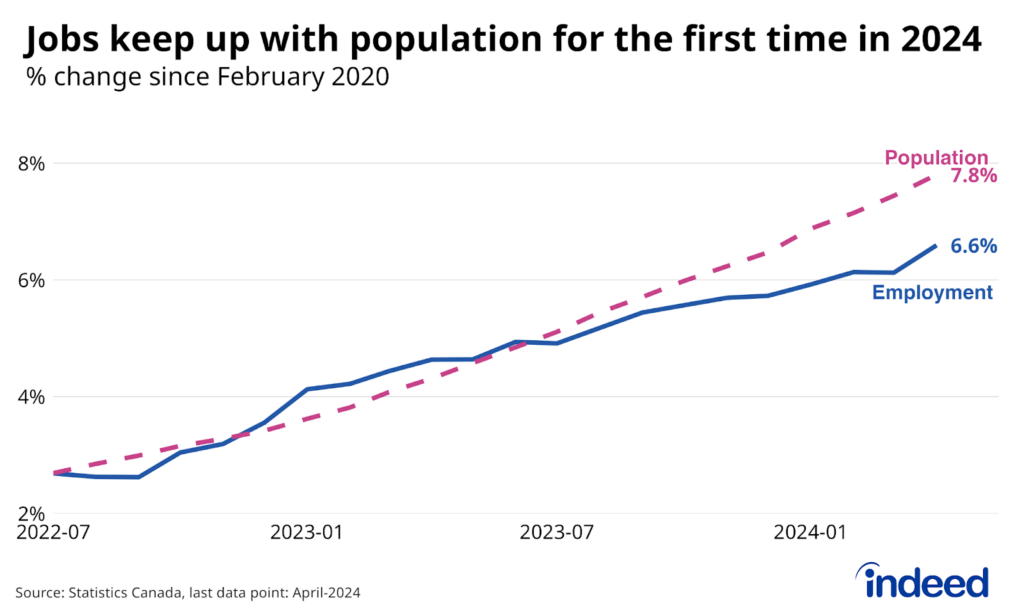The faltering trend in the Canadian labour market continued in June. The number of people working might’ve held steady, but in the context of rapid population growth, that spells trouble for the employment situation. The result was a 0.2 percentage point increase in the unemployment rate to 6.4%, the highest it’s been outside of the pandemic since 2017.
The key problem facing the Canadian labour market is that hiring is really slow. Layoffs have remained low, but the new hire rate in June was 28% slower than its pre-pandemic norm. The result has created a vastly bifurcated labour market where those employed in stable jobs are faring well, enjoying surprisingly strong wage growth, while those in more precarious situations are in some cases facing recessionary conditions.
This is most evidently the case among youth, whose employment rates have plunged over 3 percentage points over the past year, a decline which continued in June. Core-age Black and South Asian Canadians have also been particularly impacted by the plunge in hiring. Conversely, the unemployment rate among those older than 55 remains below its 2017 to 2019 average.
Turning the ship around will require the economy getting back into growth mode, and a rebound in business hiring appetite. Unfortunately, there’s little sign of that in the near term, as job postings on Indeed have softened in recent months, and now stand below their pre-pandemic level.


